Fast service or the right support? Customers don’t think they should have to choose. But our latest research shows that long wait times, vague responses, and endless transfers are pushing them away.
Many businesses turn to AI and automation to fix these issues, but they only work when they remove barriers, not create them. Speed means nothing if customers are stuck in chatbot loops or can’t reach the right person when they need to.
At Cirrus, we’ve surveyed 2,000 UK adults to uncover a growing generational and regional divide in service preferences. Older customers demand faster resolutions, while urban customers are more open to AI and self-service solutions. The challenge for businesses? Striking the right balance and creating a service experience that works for everyone.
Key insights for CX leaders
- Customers won’t wait—especially older ones: Those aged 65+ are 60% more likely than Gen Z to demand quick resolutions (61% vs. 38%). With 75% of older customers saying they would leave due to long wait times, businesses must prioritise fast resolutions through AI-powered agent assist and automation.
- Fast or friendly? The customer service dilemma: Customers want quick answers, but not at the expense of feeling valued. While only 38% of younger consumers (18-24) prioritise speed, 75% of over-65s just want real conversations.
- Getting passed around is a relationship killer: 61% of customers say being transferred multiple times frustrates them the most. 74% of older customers say this is a red line, compared to just 51% of younger customers.
- Unclear responses drive customers away: 73% of customers aged 65+ say unclear or unhelpful responses would make them leave, compared to 60% of younger customers.
- London is adopting AI and self-service: Londoners are 19% less likely than other regions to reject AI-led interactions and 63% more likely to prefer self-service (18% vs. 11%).
- Wait times are a loyalty killer: 66% of customers will leave a business over long wait times, with older customers 31% more likely than younger ones to walk away (75% vs. 57%).
Technology should fix problems, not create them
Our findings are clear: CX leaders need to move past one-size-fits-all strategies. AI and automation should be working to cut wait times, eliminate bottlenecks, and make every interaction effortless. But how can businesses get it right?
How AI can bridge the gap
Contact centre solutions are improving customer journeys:
- Intelligent call routing: Reduces wait times and prevents customers from being passed around by directing them to the right agent instantly. Example: A customer calling about a billing issue is immediately routed to a specialist, rather than having to explain their issue multiple times.
- AI-powered agent assist: Equips agents with real-time insights, helping them resolve queries faster and deliver accurate, personalised responses. Example: While speaking to a customer, an agent receives AI-suggested responses based on past communications, enabling a faster and more relevant resolution.
- Proactive customer updates: Whether it’s an order status, a payment confirmation, or an appointment reminder, automated updates reduce frustration and unnecessary contact. Example: A customer receives an automated text update when their appointment is confirmed, reducing the need to call in for confirmation.
- Blended AI and human service: AI should never be a dead-end. We ensure clear pathways from self-service to a human agent when needed. Example: A chatbot helps a customer troubleshoot a product issue, but if the problem persists, they are easily connected to a live agent for further assistance.
But technology alone isn’t enough—customers don’t just want speed, they want to feel valued. That’s why businesses need to create experiences that balance AI-driven efficiency with human support.
Creating better customer experiences with AI and agents
Service that feels like hard work turns customers away. So how do you keep them loyal? It’s not about big promises, flashy extras, or just responding faster—it’s about guiding them to the right outcome.
That could mean resolving their issue instantly, making sure they reach the right agent without the back-and-forth, or proactively updating them on their order or doctor’s appointment.
The key? Agents and AI working together—the right combination to get customers where they need to be. AI handles quick queries and updates before customers even ask, then hands over to an agent when needed—while helping them guide customers to the right answer.
Jason Roos, CEO of Cirrus, commented:
“Finding the perfect match between automation and human customer service is no easy love story. Different generations want different things—our research shows that older customers have far less patience, while younger ones are more open to AI-driven interactions. Businesses need to be adaptable, ensuring they’re meeting these evolving expectations without leaving anyone behind. And just like in any great relationship, the key is removing barriers, not creating them—especially for vulnerable customers.”
Stop making customers wait, or they’ll move on
Whether it’s older customers demanding faster resolutions or Londoners making the most of AI and self-service, one thing is clear: bad service breaks customer relationships. The businesses that get it right will be the ones that use technology to help agents resolve issues faster, strengthen connections, and keep customers coming back.
Want to find out how Cirrus can improve your contact centre? Talk to us today.





